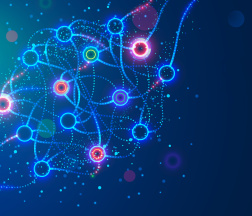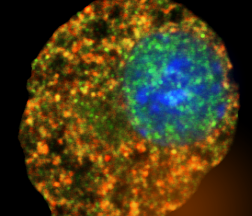Innate Immunity – Faculty of Science, Charles University
The course “Innate Immunity” (MB150P90E) addresses fundamental questions about the evolution, function and importance of innate immune system. During ectures, we will examine how this evolutionary older part of immune system distinguishes between self and foreign substances, discuss molecules that play essential roles in the recognition and removal of microbial invaders as well as describe multiple signaling pathways regulating innate immune responses. Course will characterize in detail the invertebrate innate immune system exemplified in the model organism of Drosophila melanogaster. Innate immune responses in mammals as well as their functional links to adaptive immune system will be explored. Further, the two branches of the innate immune system, humoral factors and cells, will be discussed. Finally, we will cover abnormal innate immune responses and how they lead to illness. The main course objective is to understand how the elements of innate immune system work together to achieve health and immune homeostasis. In addition, students will learn to critically read and discuss scientific papers and to evaluate data and methodologies in this quickly progressing field of immunology.
Syllabus
| Module I: Innate immunity in invertebrates | |
|---|---|
| 1. | Intro & general topics, innate immunity–historic/chronological overview; basic groups of microbes, virulence factors. |
| 2. | Innate immunity, concept and general characteristics, comparison with adaptive immunity, self-non-self recognition, Danger theory versus infectious-non-self theory. Invertebrate models of innate immunity. |
| 3. | Drosophila as a model, multiple levels of defense. Antimicrobial peptides: properties, classification, structure, mode of action. |
| 4. | Discovery and function of Drosophila Toll receptors in development and immunity; Rel transcription factors, microbial recognition systems; Toll and imd signaling pathways. |
| 5. | Detection of viruses in drosophila, receptors and signaling pathways. Unusual innate immune molecules of invertebrates. Drosophila genome and innate immunity. Future for invertebrate innate immune system research. |
| 6. | Tutorial |
| Module II: Innate Immunity in mammals | |
|---|---|
| 7. | Parallels with invertebrate system, the co-evolution of innate and adaptive system, complement systems, cells involved in body defense: leukocytes, macrophages, neutrophils, dentritic cells, mast cells. Overview of phagocytic defense, Oxidative burst Inflammation. |
| 8. | Molecular mechanism of innate immune responses: Sepsis model, discovery of Toll-like receptors, adaptor molecules, signaling pathways. |
| 9. | Intracellular NOD and NOD-like receptors and their signaling pathways; C-type lectin receptors and their signaling pathways; Viral detection by innate immune system: RIG and RIG-like receptors and their signaling pathways. |
| 10. | Links between innate and adaptive immunity: Dentritic cells as a cellular link, types of DC receptors, cytokine secretion profiles; B-1 cells and natural IgM antibody, gamma/delta T cells, NK and NKT cells. |
| 11. | Innate immune system in health and disease. |
| 12. | Tutorial and final exam questions. |
Innate Immunity – lectures (password protected)



